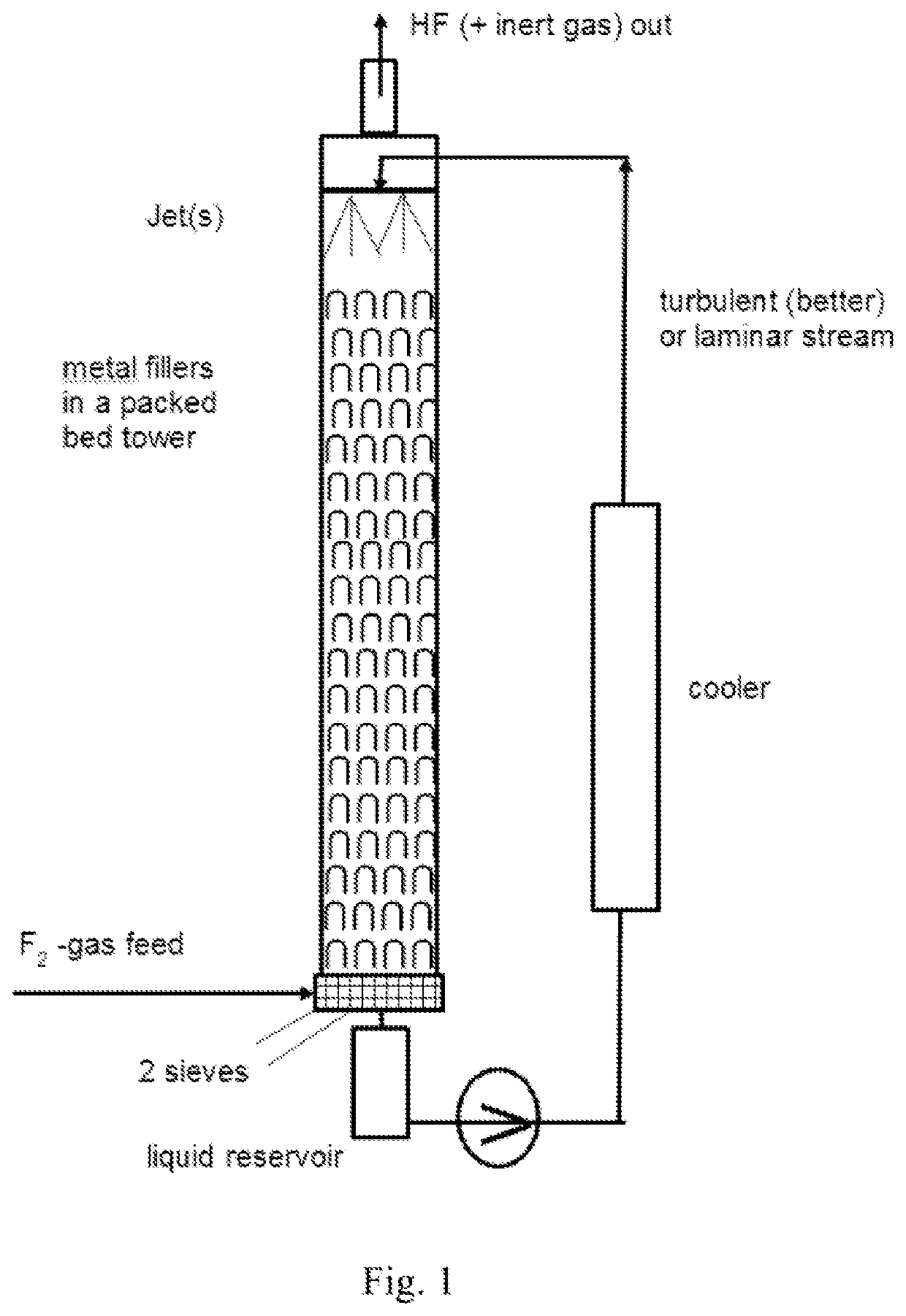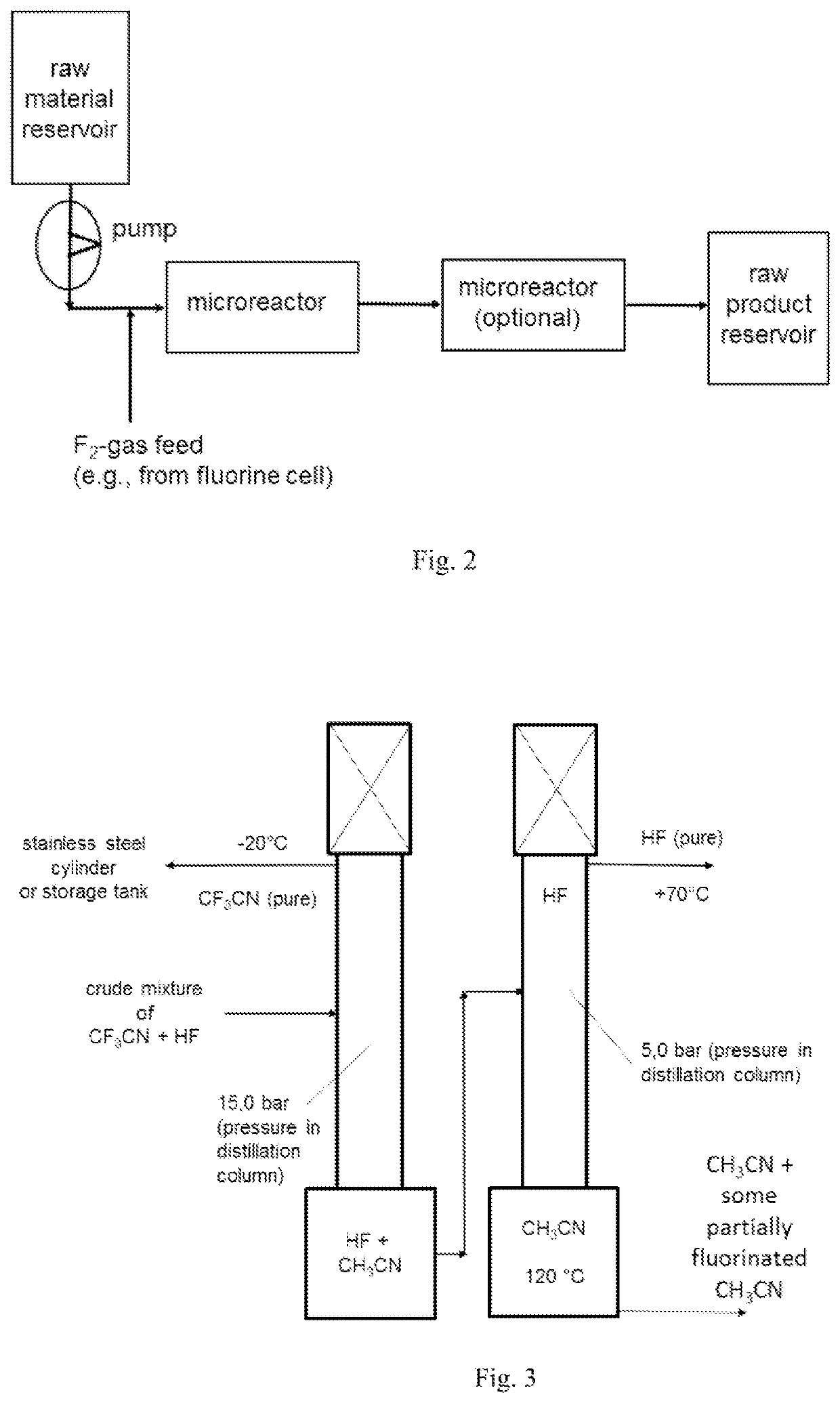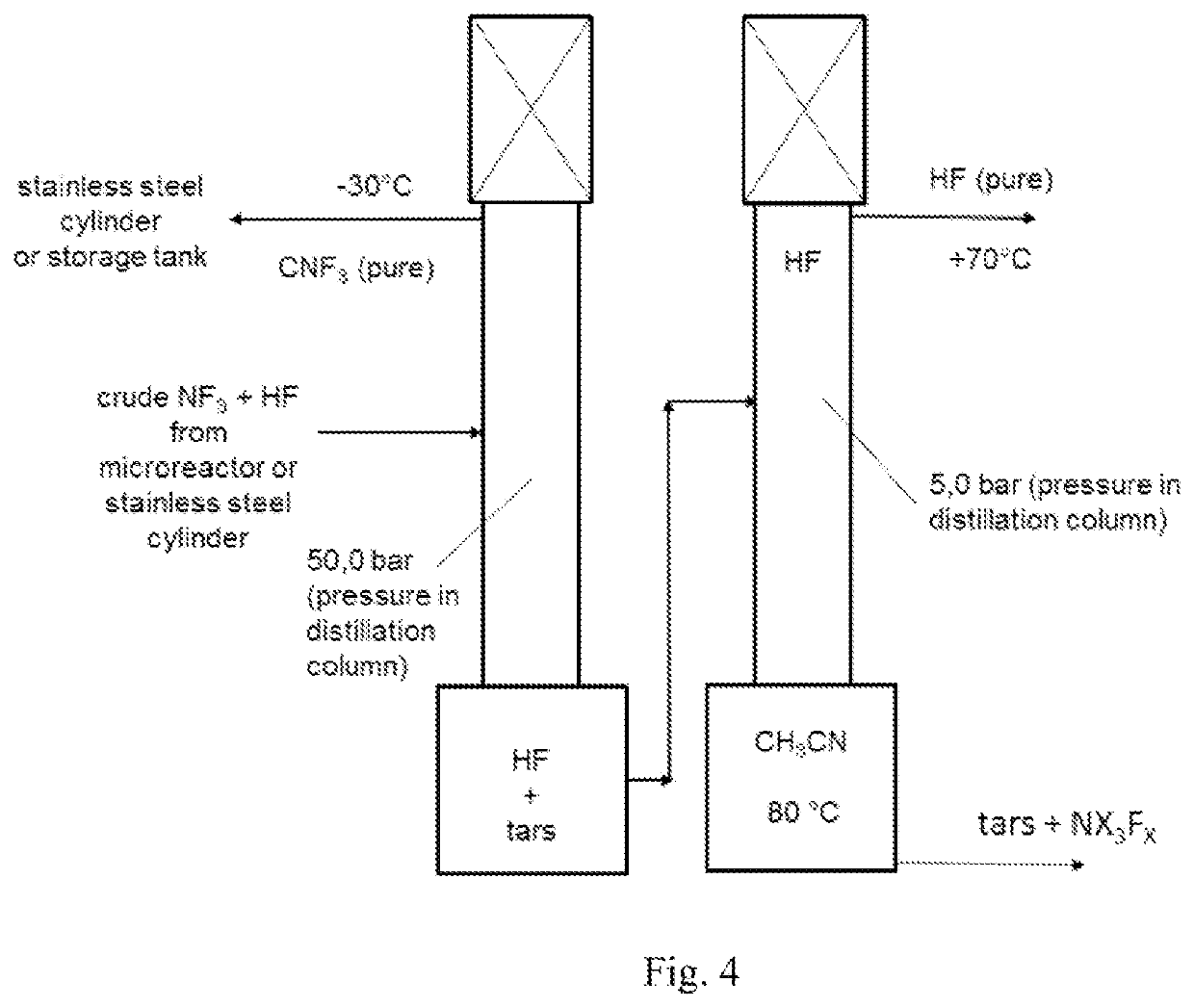Process of Fluorinating Inorganic Compounds by Direct Fluorination
a technology of inorganic compounds and direct fluorination, which is applied in the preparation of carboxylic acid nitrile, chemistry apparatus and processes, and organic chemistry, etc. it can solve the problems of reduced heat transfer, unsolved problems, and inability to meet the requirements of scalability and environmental friendliness, so as to reduce the number of separation steps, and avoid time and energy consumption
- Summary
- Abstract
- Description
- Claims
- Application Information
AI Technical Summary
Benefits of technology
Problems solved by technology
Method used
Image
Examples
example 1
[0223]
[0224]Reference to state of the art: U.S. Pat. No. 2,745,867, preparation over trichloroacetonitrile followed by fluorination with HF with CrO3 catalyst in gas phase to trifluoroacetonitrile[0225]a) By electrochemistry: in U.S. Pat. No. 3,017,336 in a special CN-containing electrolyte, carbon atom comes from anode material 4 not industrial feasible.[0226]b) Out of trifluoroacetic acid amide and P2O5 in CN 10274619.
Process of the Invention:
[0227]In a Batch fluorination counter-current apparatus having a pressure valve at the top which is set to 20 bar and with a total volume of 10 l (see drawing 1), 4.0 kg (97.4 mol, 5.1 l) of absolute acetonitrile were filled and the pump was started. The for the cooler a water cooling with a water temperature of 8° C. was used. When the temperature of the acetonitrile reached 15° C., the conc. F2 valve was opened with a dosage of 20 mol F2 gas / h. For this trial, the F2-gas had a concentration of 97% / h. Some purge gas leaves the apparatus toge...
example 2
[0234]The fluorination of CH3CN was repeated continuously in a microreactor system using in lab a 27 ml SiCmicroreactor from Chemtrix. The CH3CN and F2 feed was set to a molar ratio of 1:3.1 and the reactor was kept at 5° C. The liquid feed was 234 g (5.7 mol, 300 ml) CH3CN per hour. The F2-gas stream, which come directly from a fluorine electrolysis cell (controlled with a Bronkhorst mass flow meter), was fed together with the CH3CN in a split and re-combine system before it entered into the microreactor channels. The achieved yield after continuous 2 column distillation like described in example 1 gave a CF3CN yield of 96%.
example 3
[0235]
[0236]Methane sulfonic acid fluoride was fluorinated in batch at 10° C. according to Example 1. The yield was 78% after a continuous fine distillation.
[0237]The fluorination product trifluoromethane sulfonyl fluoride (TFSAF) gives triflic acid after hydrolysis or can be used as raw material to prepare LiTFSI (Li-salt of 1,1,1-trifluoro-N-[(trifluoromethyl)sulfonyl]-methanesulfonamide).
PUM
| Property | Measurement | Unit |
|---|---|---|
| pressure | aaaaa | aaaaa |
| temperature | aaaaa | aaaaa |
| temperature | aaaaa | aaaaa |
Abstract
Description
Claims
Application Information
 Login to View More
Login to View More - R&D
- Intellectual Property
- Life Sciences
- Materials
- Tech Scout
- Unparalleled Data Quality
- Higher Quality Content
- 60% Fewer Hallucinations
Browse by: Latest US Patents, China's latest patents, Technical Efficacy Thesaurus, Application Domain, Technology Topic, Popular Technical Reports.
© 2025 PatSnap. All rights reserved.Legal|Privacy policy|Modern Slavery Act Transparency Statement|Sitemap|About US| Contact US: help@patsnap.com



